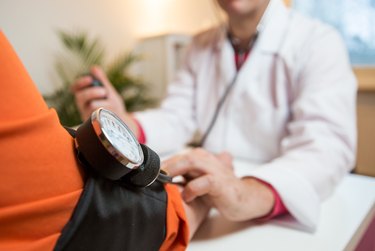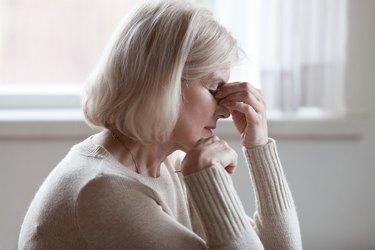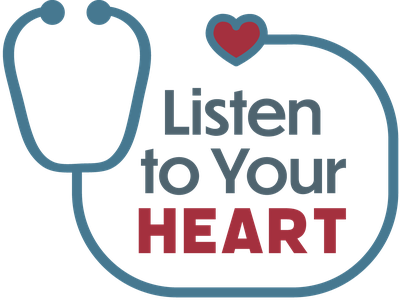
Many people think only of high blood pressure — or hypertension — as being a health risk, but blood pressure that's too low can also cause health problems.
Some people may have naturally low blood pressure, while it could be a side effect of a medical condition for others, but it can be dangerous either way.
Here's what you need to know about the health risks of low blood pressure, and when to seek medical attention.
What Is Low Blood Pressure?
According to the American Heart Association (AHA), normal blood pressure is made up of two readings: systolic (the top number), which measures the pressure of your blood in your arteries as your heart beats, and diastolic (the bottom number), which measures the pressure of your blood in the arteries when your heart rests between beats.
A normal blood pressure is a systolic reading of under 120 and a diastolic of less than 80. For example, a blood pressure that would be considered normal for a healthy adult would be 110/70.
Technically speaking, low blood pressure — or hypotension — is a blood pressure reading of less than 90/60, says Alexandra Lajoie, MD, a non-invasive cardiologist at Providence Saint John's Health Center in Santa Monica, California. However, she explains that a low blood pressure reading is considered dangerous anytime it is causing symptoms that last more than a few seconds.
"The number is variable and depends on a patient's other medical conditions," she says. "Some people have symptoms if their systolic blood pressure is below 120, others below 70."
What Causes Low Blood Pressure?
According to the National Heart, Lung, and Blood Institute, some people just have low blood pressure all the time. Because that's normal for them, it doesn't cause any symptoms and it is not considered dangerous.
"People who are thin and very physically active tend to have lower blood pressure," Dr. Lajoie tells LIVESTRONG.com. In general, pre-menopausal women and very thin young people also tend to have lower blood pressure.
In other cases, however, low blood pressure is not normal. Dehydration, for example, is a common cause of low blood pressure, Dr. Lajoie says. And the following conditions could also cause it, according to the AHA:
- Infection, especially if the bacteria enter your bloodstream (septic shock)
- Anemia
- A severe allergic reaction
- Some neurologic conditions
- Arrhythmias (abnormal heart rhythms)
- Heart failure
- A decrease in blood volume, such as from a trauma or internal bleeding
- Endocrine disorders, including hypothyroidism and sometimes diabetes
- Neurally mediated hypotension, a disorder caused by miscommunication between the heart and brain that leads your blood pressure to drop after you stand for a long period of time
- Postprandial hypotension, a condition that most commonly occurs in older adults, in which your blood pressure drops after meals
- Orthostatic hypotension, when your blood pressure drops with standing up from a sitting position — you can experience this temporarily, such as when you stand up too fast and your legs have been crossed, or chronically, which is a more serious condition
Low blood pressure can also be a result of bed rest, pregnancy or certain medications, such as hypertension medication, diuretics, certain types of antidepressants and erectile dysfunction drugs like Viagra.
Read more: Causes of Low Diastolic Pressure
What Are the Signs and Symptoms of Low Blood Pressure?
The first and most common symptom that your blood pressure is too low, Dr. Lajoie says, is lightheadedness and fainting. Some people also feel fatigue with low blood pressure.
The most common reason to become dizzy or faint is that the systolic blood pressure is temporarily too low to allow adequate blood flow to the brain. "This usually occurs when the systolic pressure is less than 80," Dr. Lajoie explains.
According to the AHA, low blood pressure can also cause the following symptoms:
- Nausea
- Unusual thirst
- Inability to concentrate
- Blurred vision
- Cold, clammy and pale skin
- Rapid breathing
- Fatigue
- Depression

Health Risks of Low Blood Pressure
There are both direct and indirect risks to having low blood pressure:
1. Inadequate Oxygen
As Dr. Lajoie mentioned, the main risk of low blood pressure is that there isn't enough pressure in your blood vessels to get blood — and thus, oxygen — where it needs to go in your body, especially to the brain. Think of it like trying to take a shower when the water pressure is too low—you just can't get the job done easily or effectively.
2. Heart Problems
Severely low blood pressure can cause damage to your heart by depriving it of oxygen, according to the Mayo Clinic.
Individuals with existing coronary heart disease and very low blood pressure as a result of treatment are at an increased risk for cardiovascular events, such as a heart attack, according to a February 2017 study in the British Medical Journal.
Another study, published September 2018 in the Journal of the American College of Cardiology, found that very low blood pressure is associated with increased angina, or chest pain, in people with chronic coronary artery disease.
3. Injury
If you experience a sudden drop in blood pressure, you are at risk for fainting, which could lead to an injury from falling.
4. Kidney Damage
According to Dr. Lajoie, certain patients with kidney failure can experience worsened kidney function if their blood pressure is too low.
5. Exacerbation of Stroke Symptoms
"Patients with prior strokes can have recurrence of stroke symptoms if their blood pressure drops too low," Dr. Lajoie says.
6. Other Health Risks
Health risks from hypotension are still being studied by doctors. For example, a March 2018 study from BMC Public Health using data from the Korean National Health and Nutrition Examination Survey found that there is actually an association between suicidal thoughts and low blood pressure.
The study concluded that the rates of suicidal ideation was "significantly higher" among adults who had low blood pressure.
Read more: Raised Blood Pressure and Bodybuilding
Treatment for Low Blood Pressure
How low blood pressure is treated will depend on the cause of the low blood pressure, but some common treatments include:
1. Preventative Measures
In some situations, taking preventive measures can help correct your low blood pressure. For instance, if you have neurally mediated hypotension and a job that requires you to stand still for long periods of time, your blood pressure can drop.
Dr. Lajoie explains that taking preventive measures such as moving your legs around, walking at regular intervals, getting up slowly and performing leg exercises can help prevent dangerous drops in blood pressure that could cause fainting.
2. Hydration
Adequate fluid intake is key to maintaining a healthy blood pressure, Dr. Lajoie says. Improving hydration can sometimes be sufficient to raise blood pressure levels.
3. Dietary Changes
In some situations, a doctor will prescribe increasing your salt intake to try to raise your blood pressure. However, Dr. Lajoie cautions that you should always talk to your doctor before making any significant changes to your salt intake because in certain situations — such as heart failure — it can make your blood pressure worse.
Certain kinds of anemia are caused by a lack of the essential vitamins B12 and folic acid, according to the National Heart, Lung, and Blood Institute, so taking those vitamins to improve the anemia may help treat your low blood pressure. Again, though, you should talk to your doctor before adding a supplement to your diet.
4. Medication
If you are on any types of medication and are experiencing low blood pressure, your doctor may take a look through your medication regimen to determine if any are the culprit.
And in some very rare cases, Dr. Lajoie says your doctor may prescribe medication to raise your blood pressure.
When to See a Doctor for Low Blood Pressure
In most cases, unless you have suffered an obvious injury or trauma, getting a single low blood pressure reading without any noticeable accompanying symptoms is nothing to be concerned about.
However, if you notice that you are having regular episodes of low blood pressure, it's a good idea to take note of when your symptoms are occurring (such as after you take a certain medication or following meals, for example) and schedule an appointment to discuss it with your doctor.
And if you are experiencing any immediate and lasting low blood pressure symptoms, such as feeling lightheaded, dizziness or fainting, you should seek medical attention right away.
Is this an emergency? If you are experiencing serious medical symptoms, please see the National Library of Medicine’s list of signs you need emergency medical attention or call 911.
